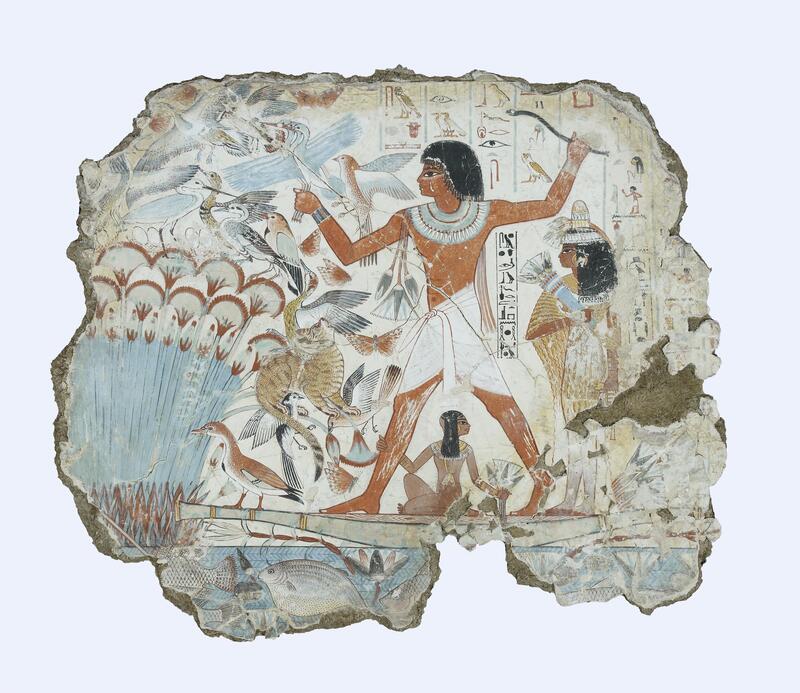The Tomb of Nebamun Frescoes
The Tomb of Nebamun Frescoes exhibits a series of beautiful wall paintings that graced the tomb of Nebamun, a high-ranking official who lived around 1350 BCE during the New Kingdom period. These frescoes were discovered in the early nineteenth century near Thebes, Egypt, and were purchased by the British Museum in 1821.
The frescoes cover the walls of Nebamun's tomb and feature intricate and bright scenes. They were made with the fresco technique, in which pigments were put to wet plaster and allowed to form an integral part of the wall surface. The paintings portray several parts of Nebamun's life, such as his position as a scribe, interactions with his family, and participation in religious rites.
Daily Life Depictions: The Tomb of Nebamun Frescoes offer a wonderful glimpse into ancient Egyptian daily life. Nebamun is shown hunting in the marshes, fishing in the Nile, and supervising agricultural work in several scenes. These paintings emphasise the ancient Egyptians' reverence for the natural world and its resources, as well as Nebamun's affluent existence.
The frescoes in Nebamun's tomb are renowned for their remarkable artistic quality and attention to detail. The talented artisans displayed extraordinary precision in portraying human forms, animals, greenery, and complicated patterns. Vibrant colours, shading, and perspective provide depth and authenticity to the scenes, resulting in a visually attractive and immersive experience.
Religious and ritualistic elements are also depicted in the tomb paintings, providing insights into ancient Egyptian beliefs and rituals. Nebamun is portrayed taking part in religious ceremonies, presenting offerings to deities, and partaking in afterlife rituals. These scenes represent the Egyptians' deep religious beliefs and their faith in the continuation of life after death.
Preservation and Display: The British Museum has meticulously conserved and displayed these fragile frescoes in a designated gallery to ensure their preservation. The paintings' meticulous intricacies are highlighted by smart lighting and insightful subtitles that provide context and interpretation. The beauty and relevance of the Tomb of Nebamun Frescoes can be appreciated by visitors to the British Museum, who will obtain a better appreciation of ancient Egyptian culture and artwork.
The Tomb of Nebamun Frescoes is a priceless artefact that transports us to the vivid world of an ancient Egyptian lord. We learn about this civilization's daily lives, religious beliefs, and creative triumphs through these meticulously made wall paintings. A visit to the British Museum is a once-in-a-lifetime chance to admire and appreciate the rich cultural legacy preserved within the Tomb of Nebamun Frescoes.
